Abstract
1. Surface potentials, similar to those found by earlier workers, have been recorded from the vermis of the anterior lobe of the cerebellum following stimulation of muscular, cutaneous and articular nerves of the ipsilateral hind limb. The most conspicuous component of the response consisted of a positive potential succeeded by a smaller negative potential.
2. Micro-electrode recordings showed that this component coincided both with climbing fibre responses in individual Purkinje cells, and with extracellular field potentials within the cerebellar cortex which closely resembled those found by Eccles, Llinás & Sasaki (1966) following electrical stimulation of the inferior olive.
3. Stimulation of the cerebellar surface, in the region where the responses to limb nerve stimulation were largest, led to antidromic invasion of neurones of the contralateral inferior olive. The antidromic action potentials were sometimes followed by up to three orthodromic spikes. Histological techniques were used to show that these neurones were located in the caudal parts of the dorsal and medial accessory olives.
4. Stimulation of nerves of the hind limb evoked discharges of the same neurones of the dorsal accessory olive which were antidromically invaded from the vermis of the anterior lobe. The nerves used (quadriceps, gastrocnemius-soleus, sural and the posterior nerve to the knee joint) were shown to excite heavily overlapping populations of neurones.
5. Those neurones of the medial accessory olive, which were identified antidromically from the anterior lobe vermis, were not discharged by stimulation of hind limb nerves.
6. Simultaneous recording from the surface of the anterior lobe and from the dorsal accessory olive showed that the onset of olive cell discharges occurred about 5 msec before the onset of the positive potential at the cerebellar surface.
Full text
PDF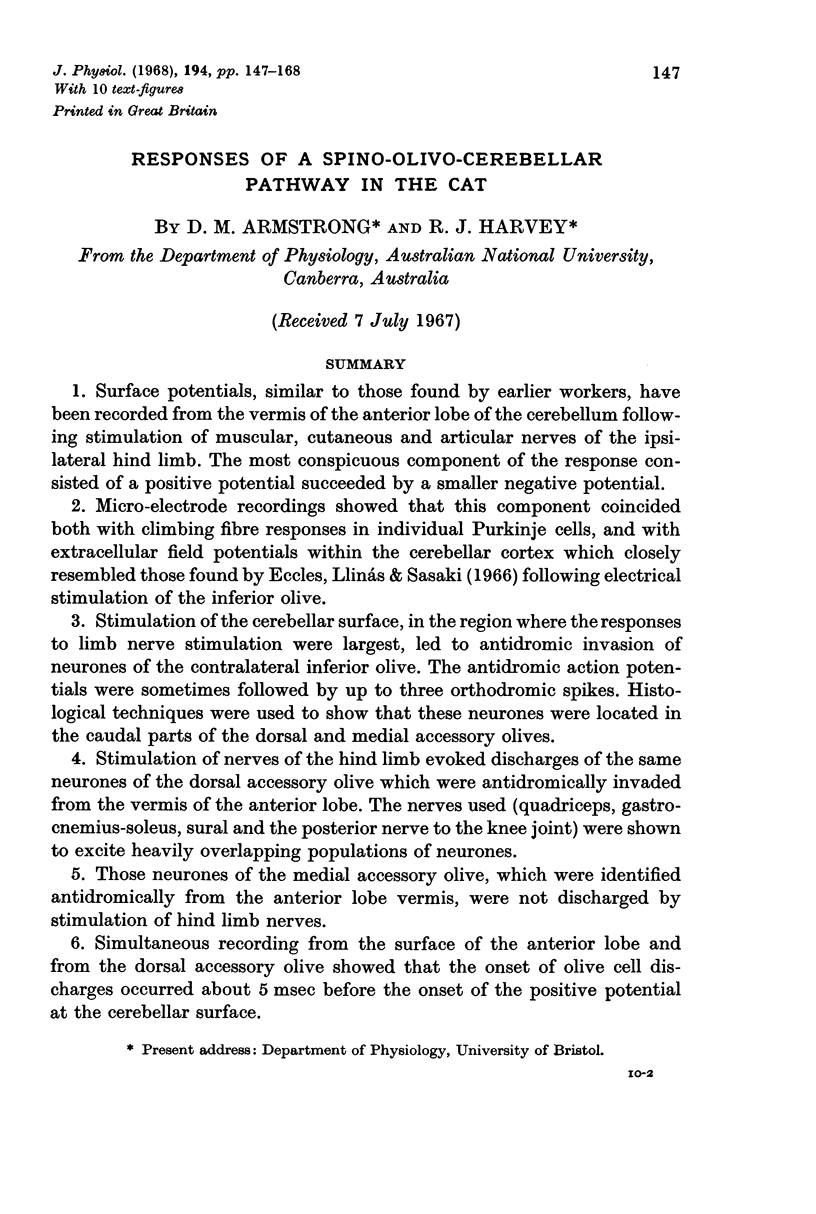
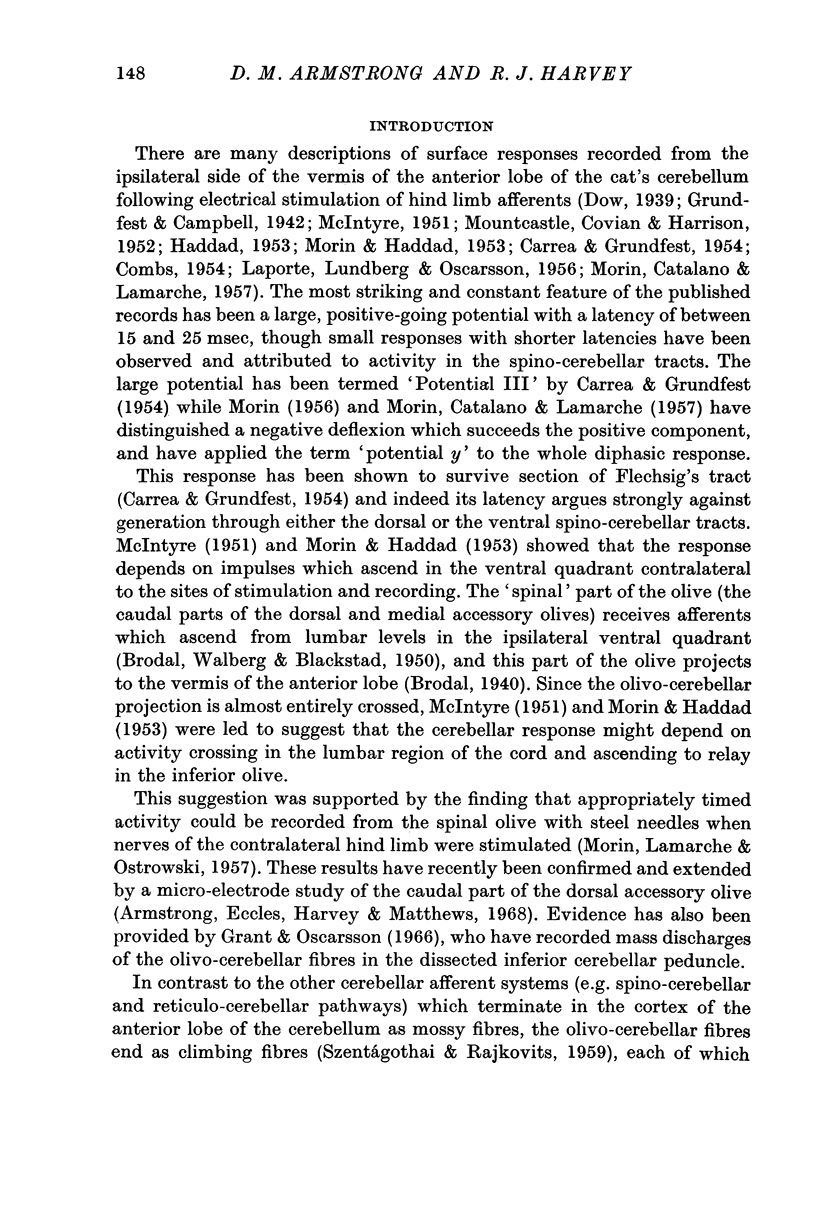
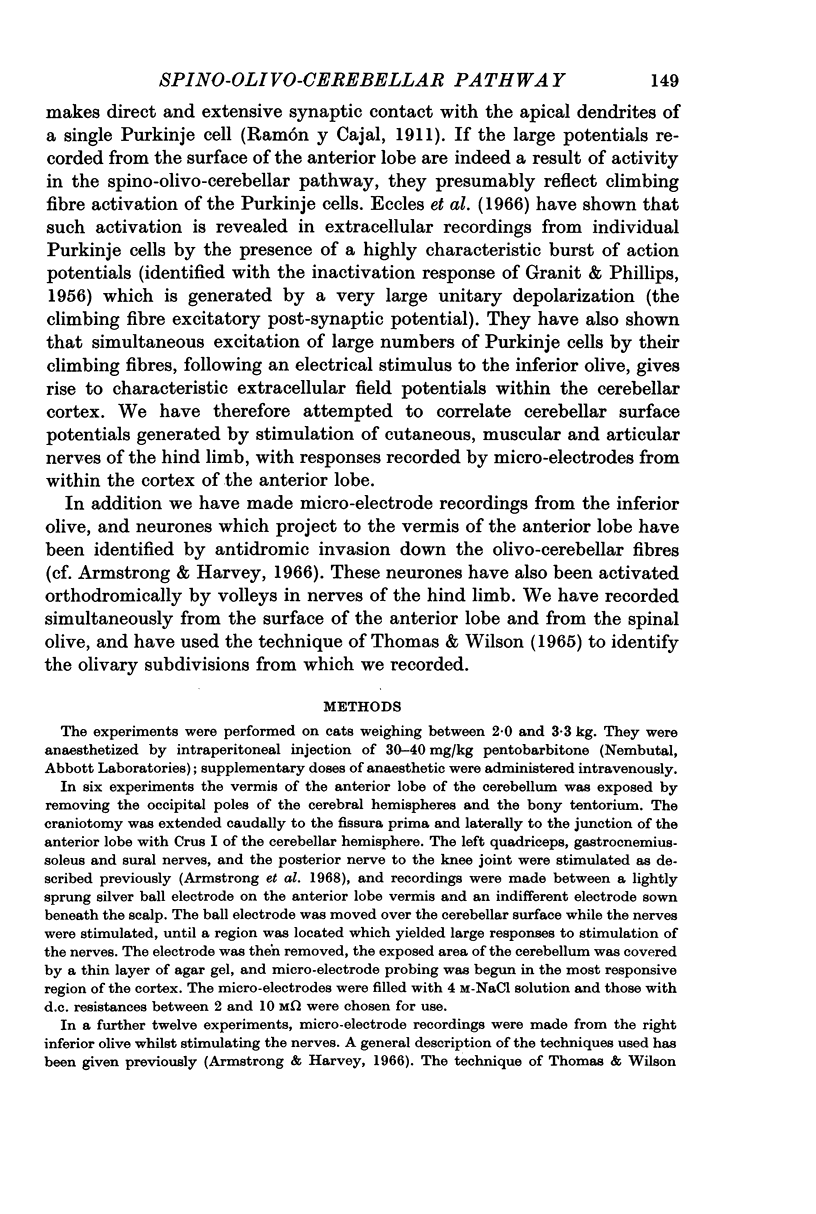
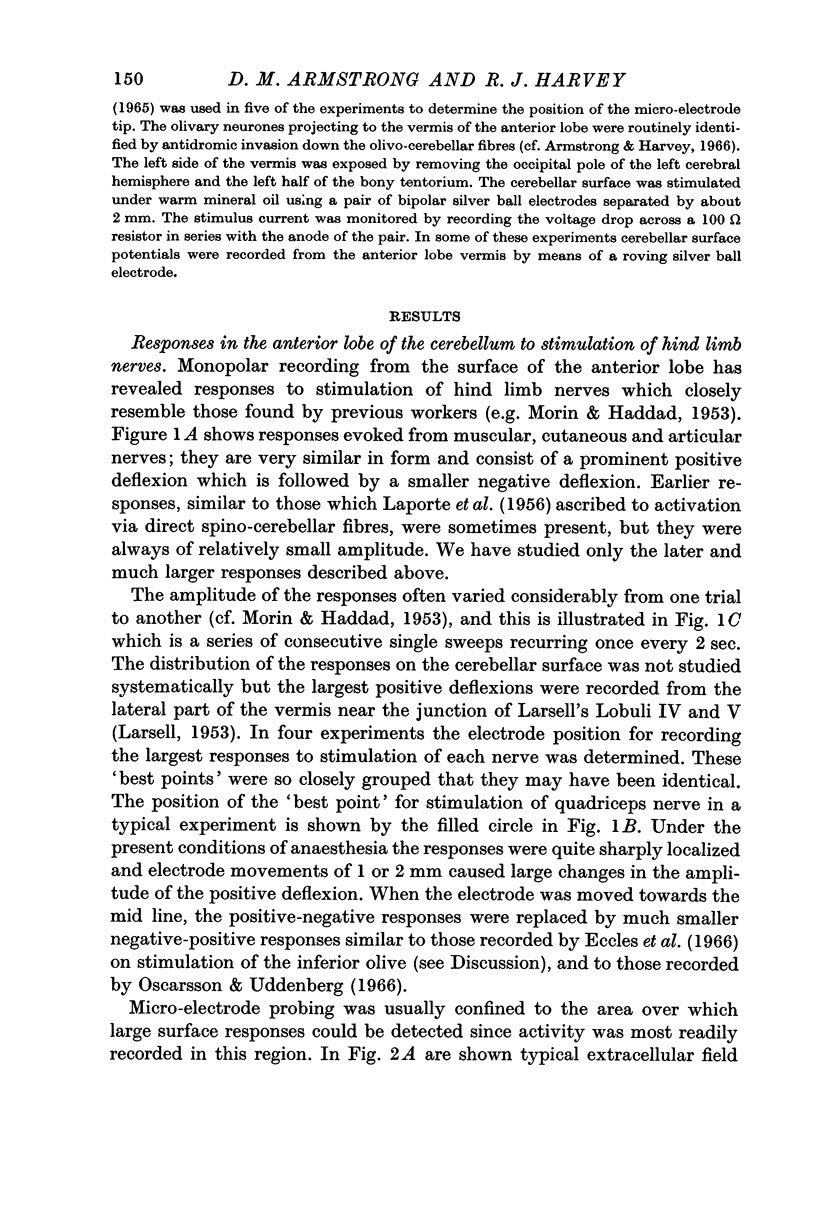
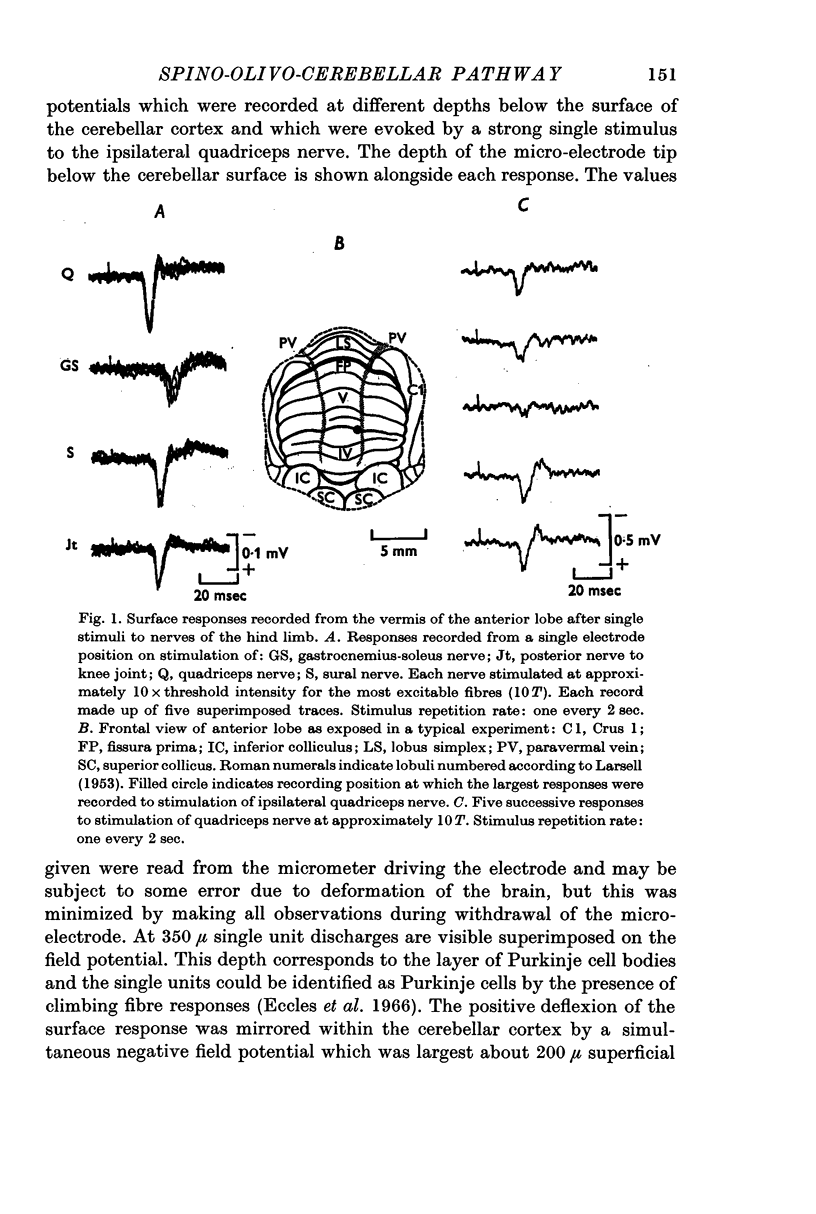
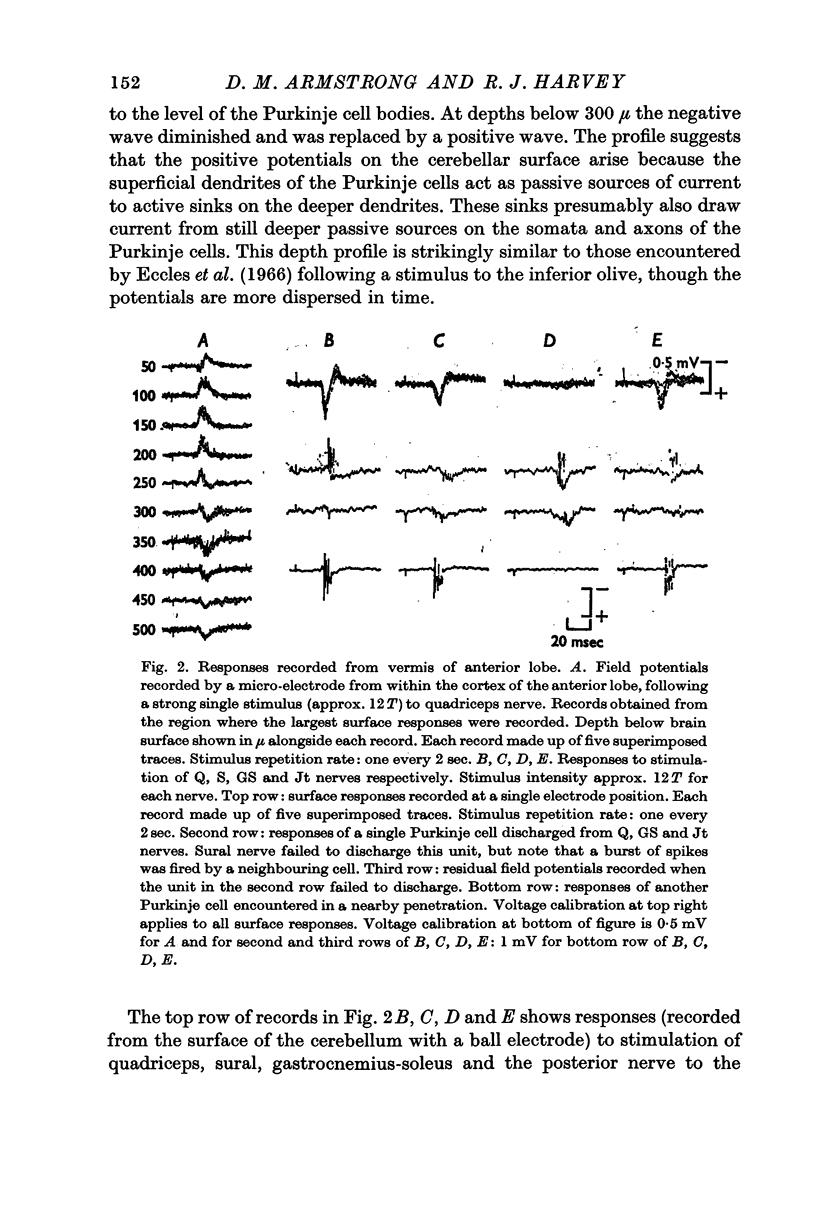
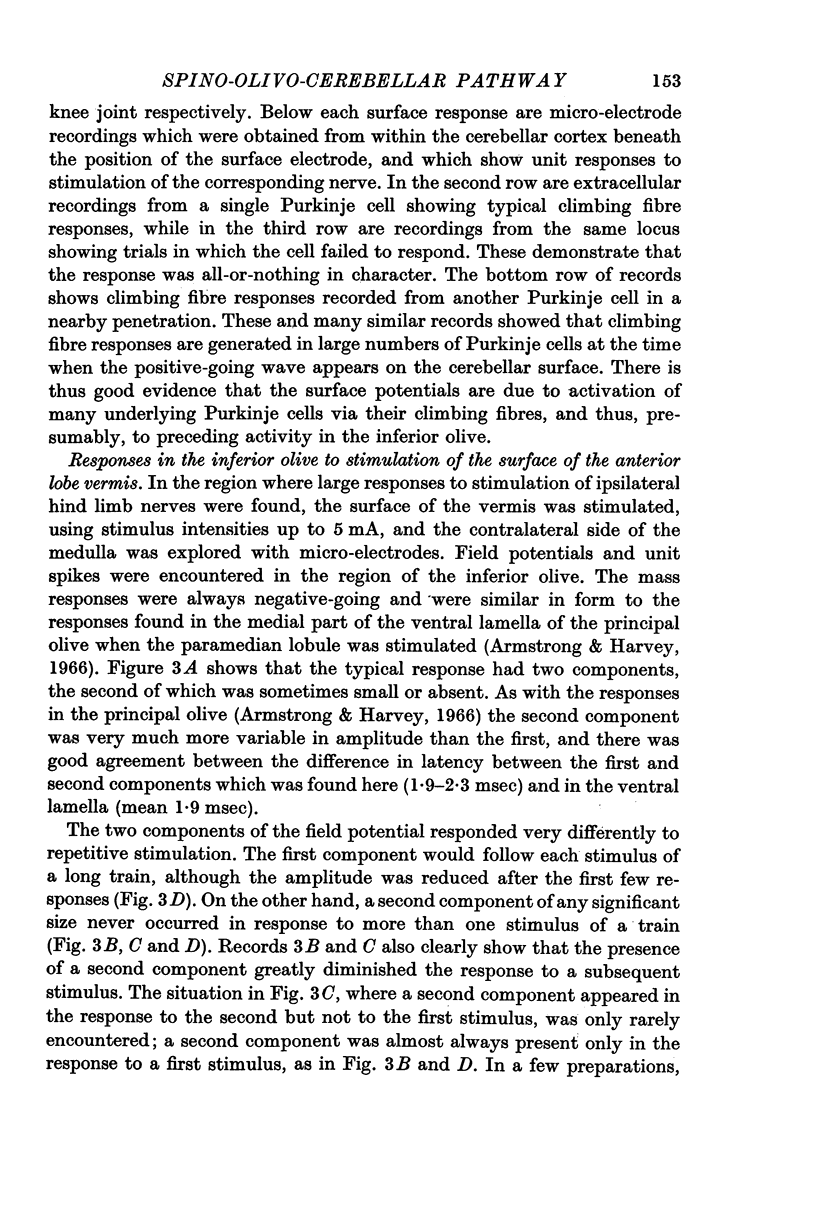
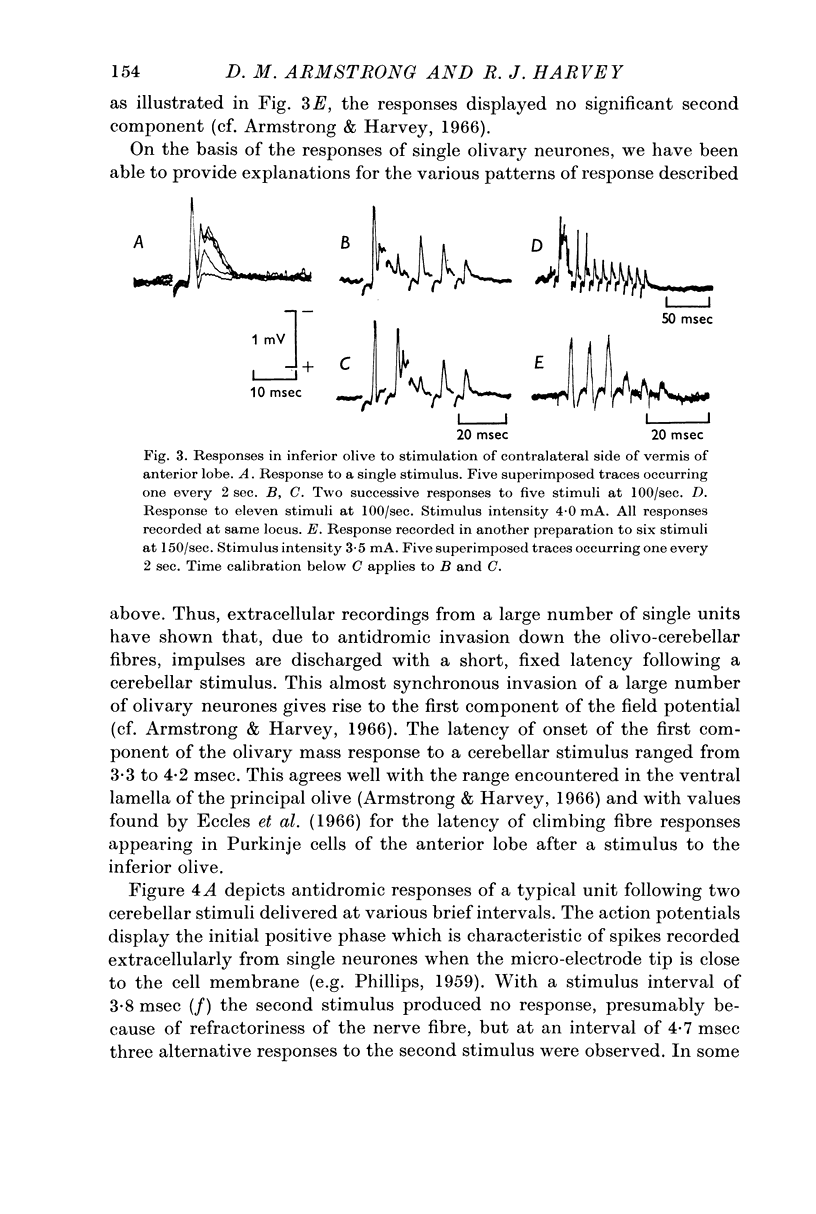
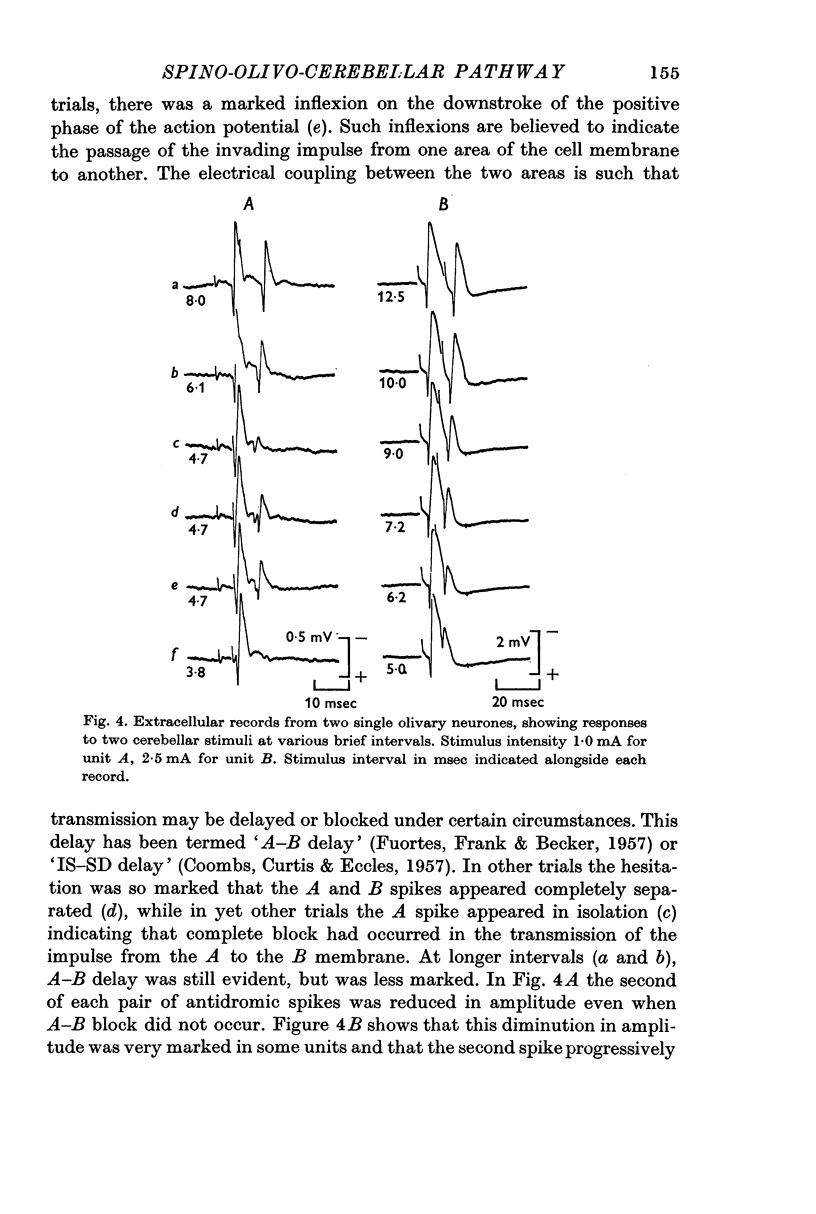
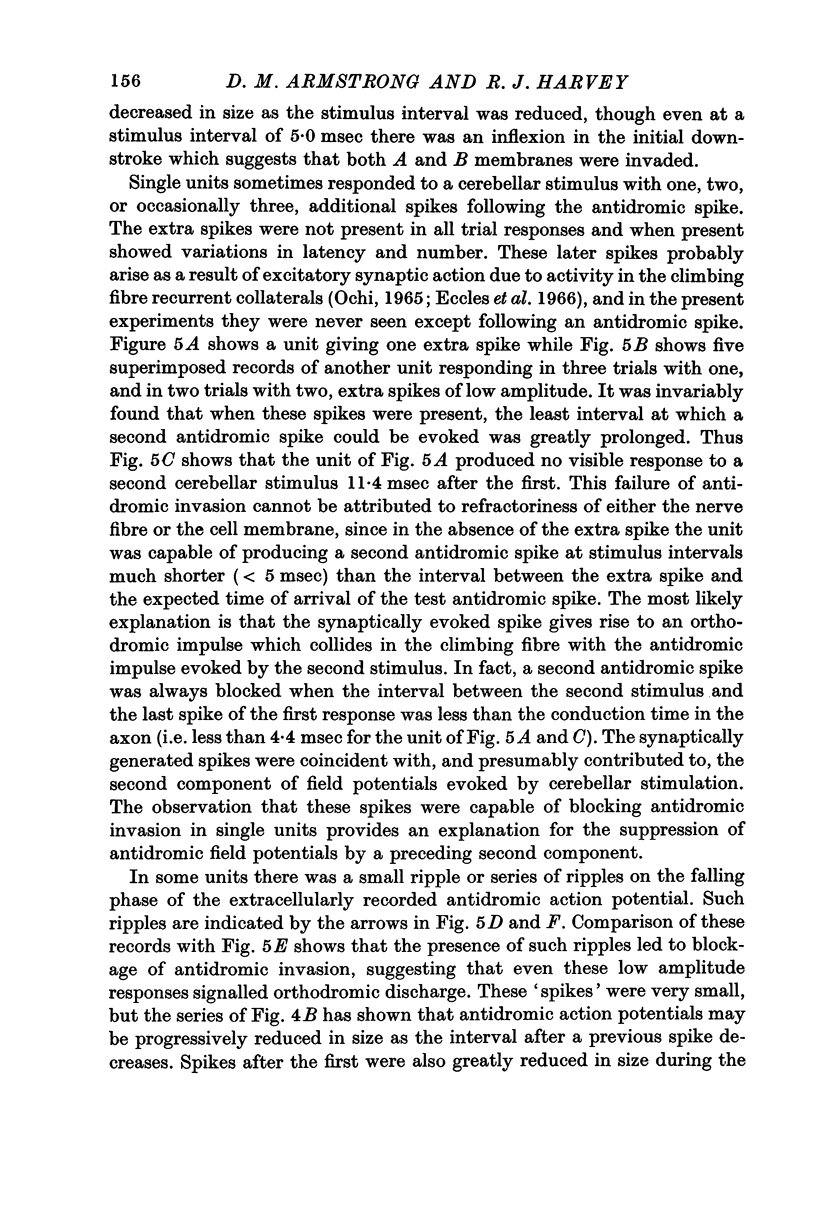
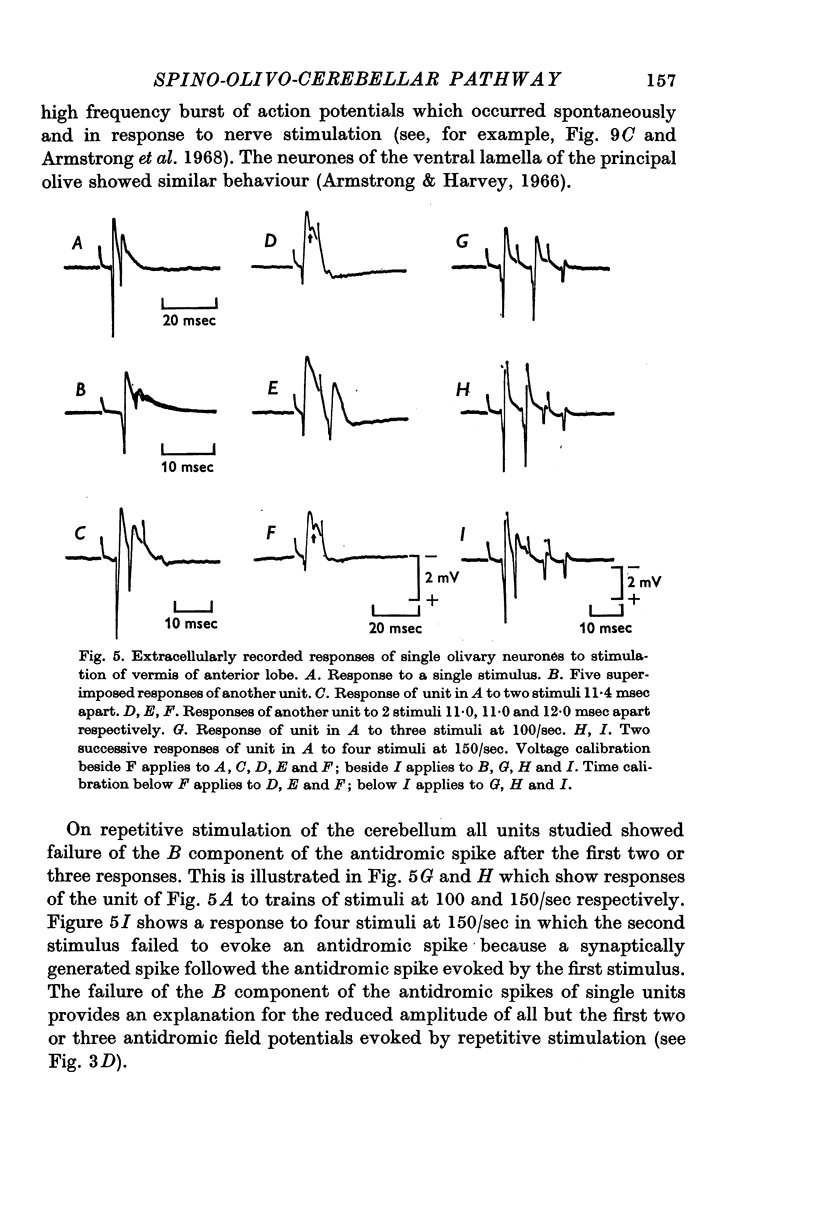
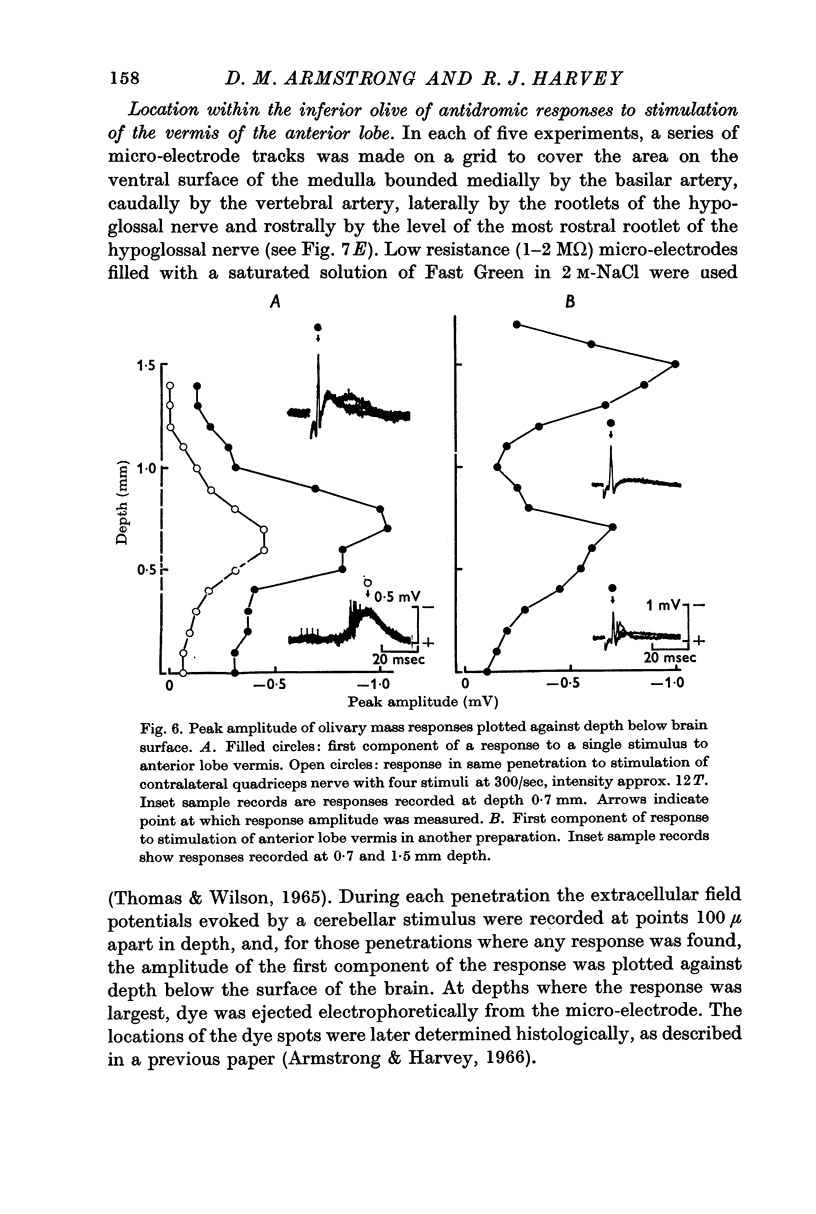
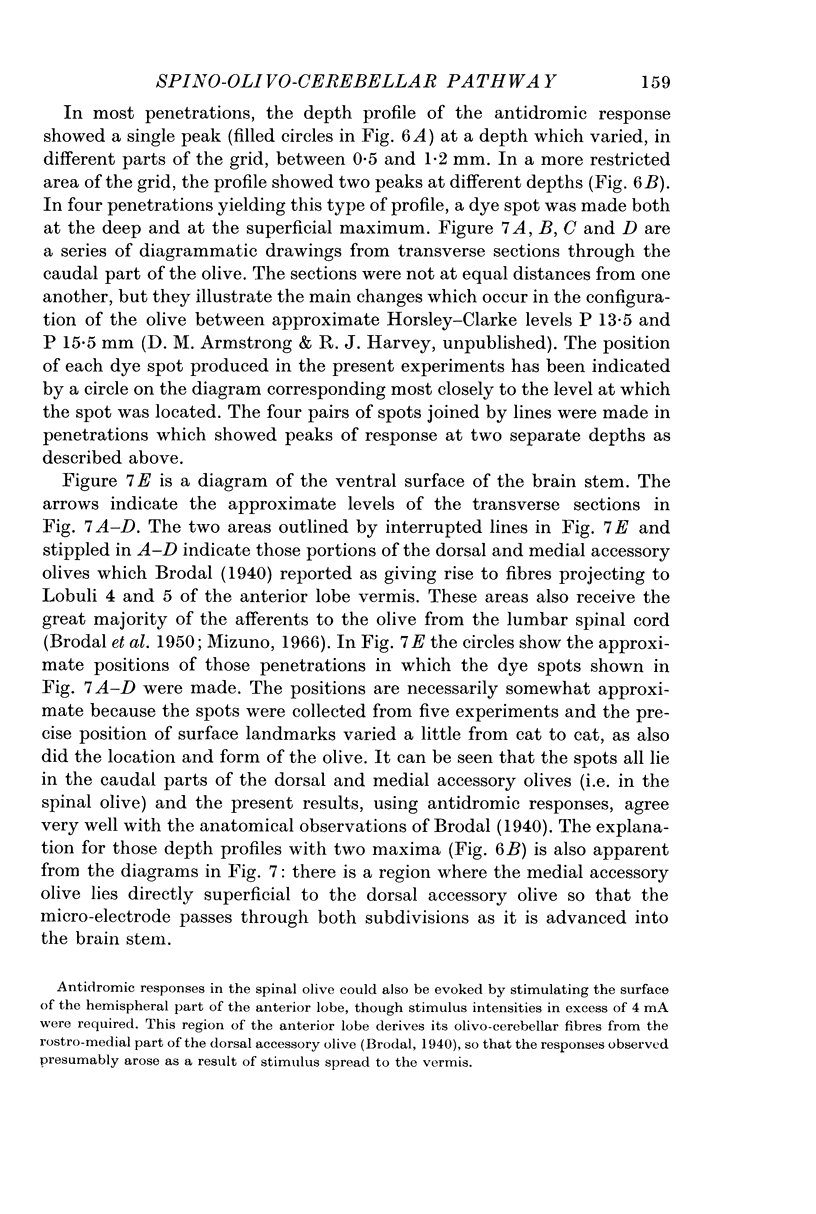
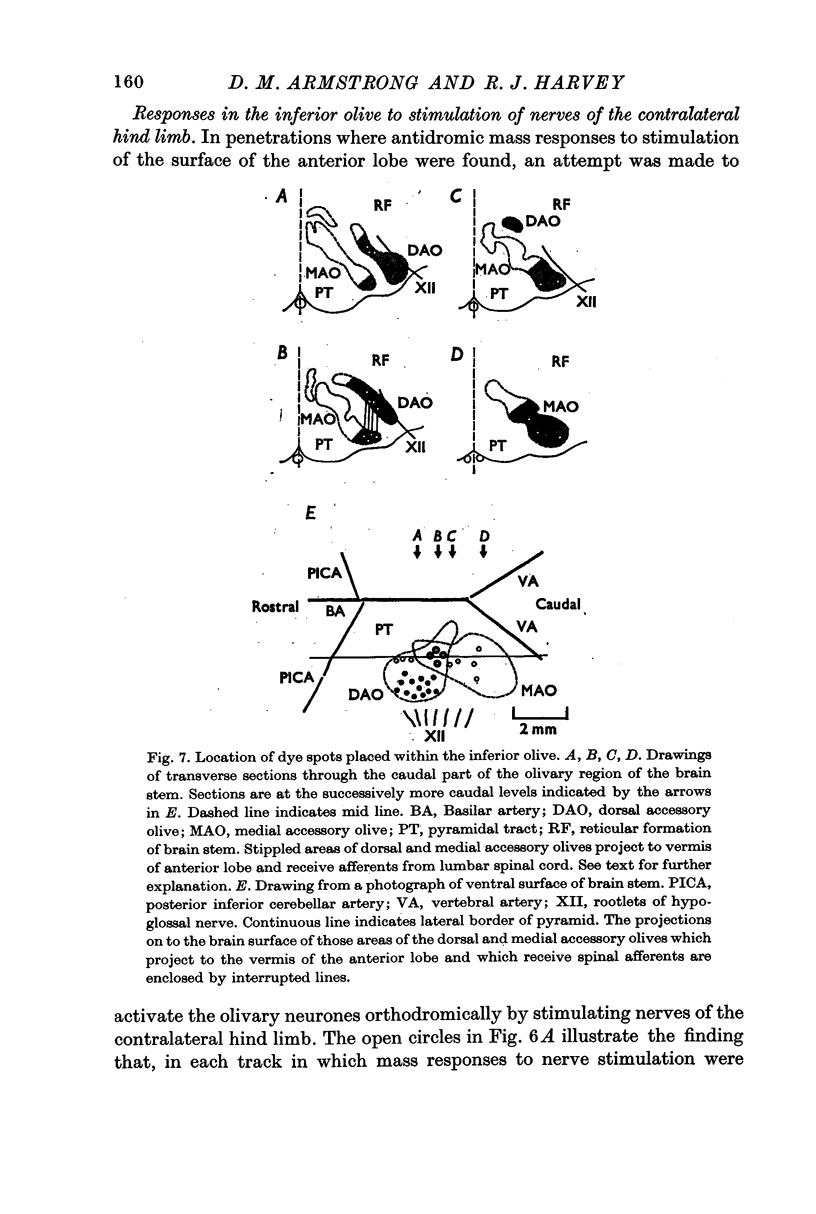
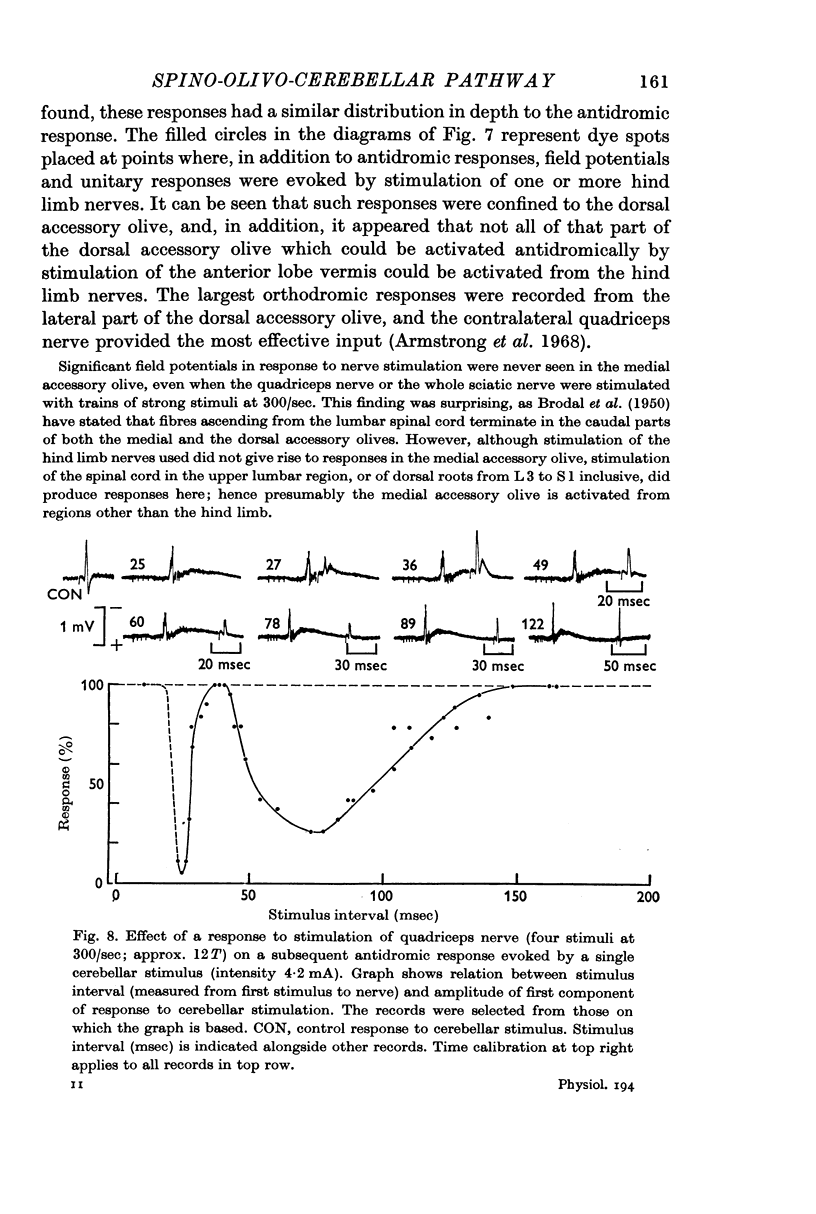
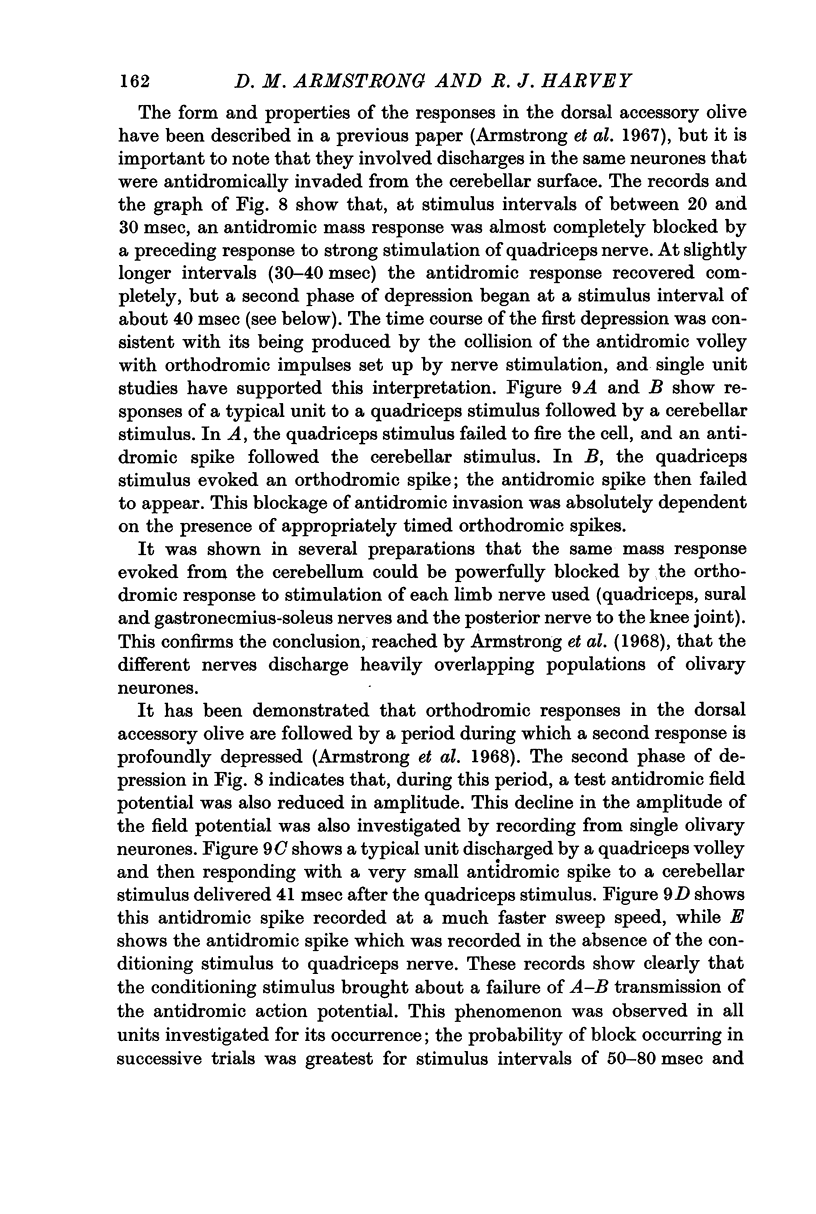
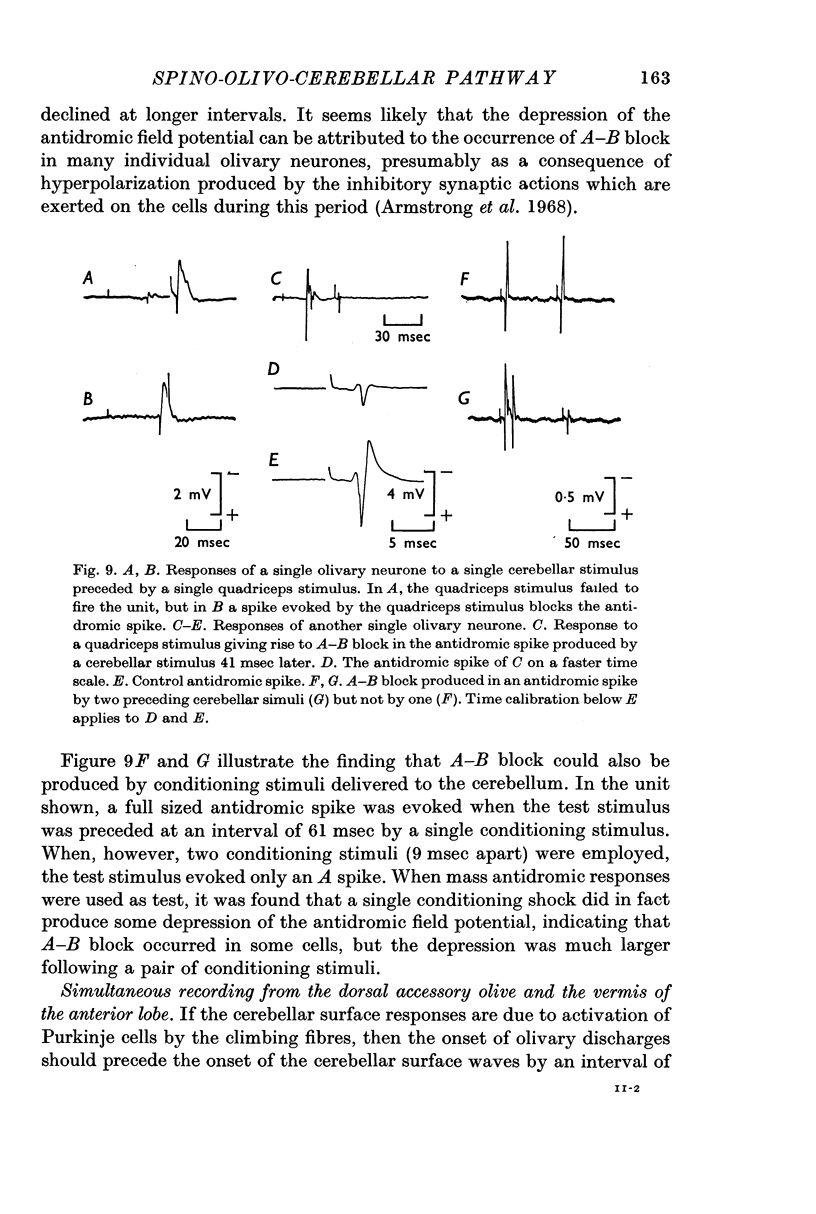
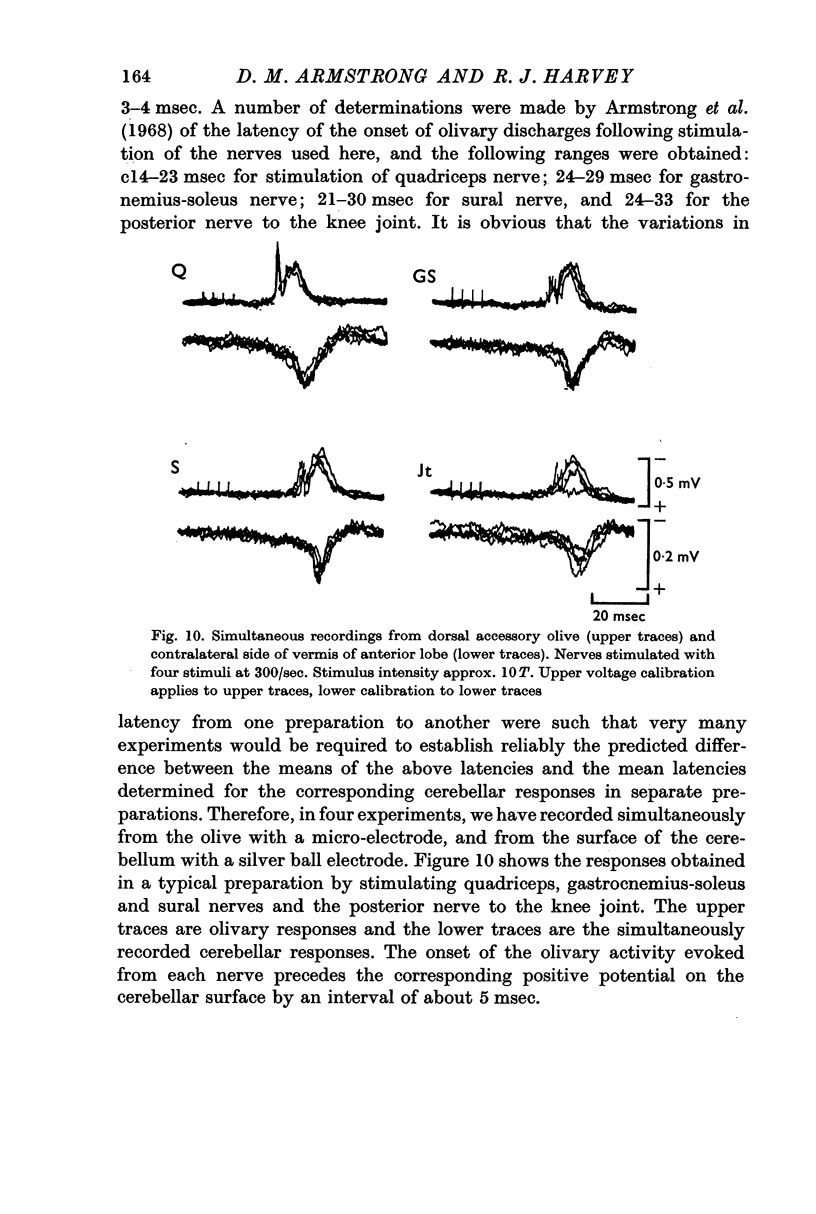
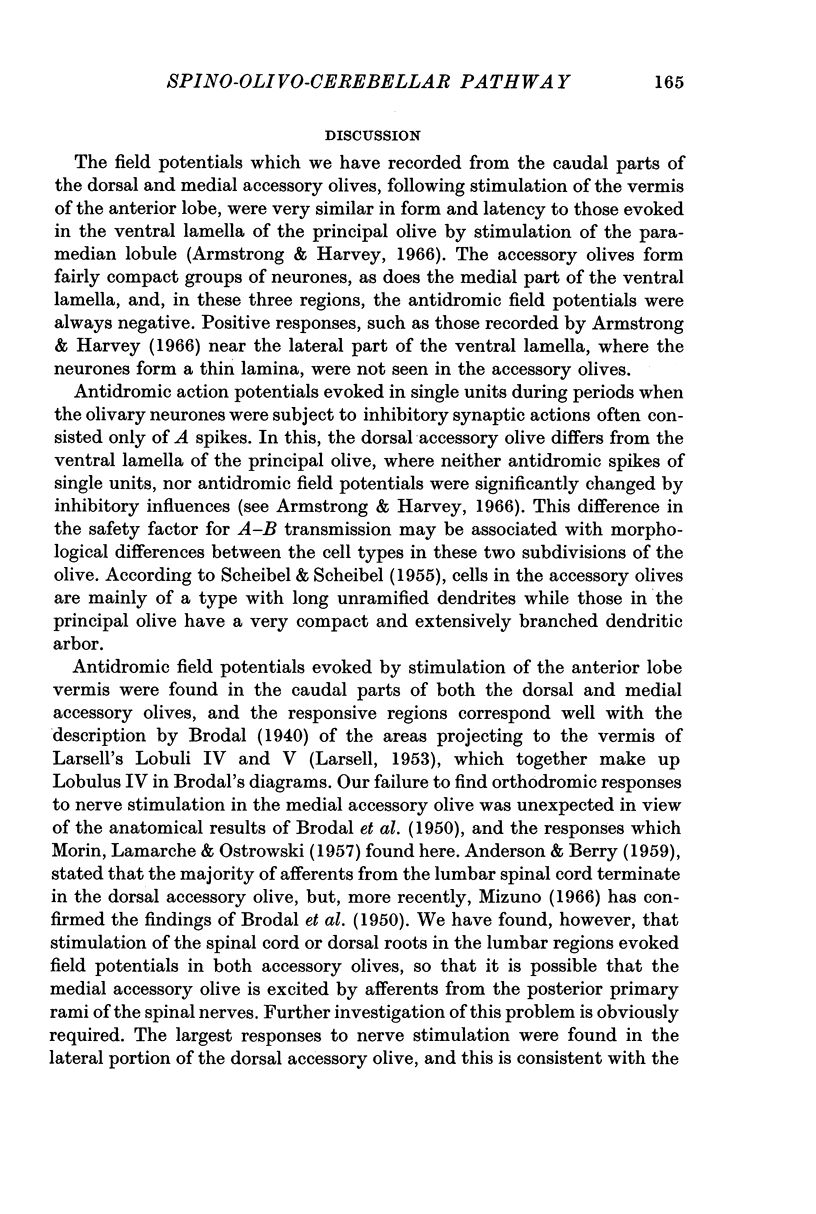
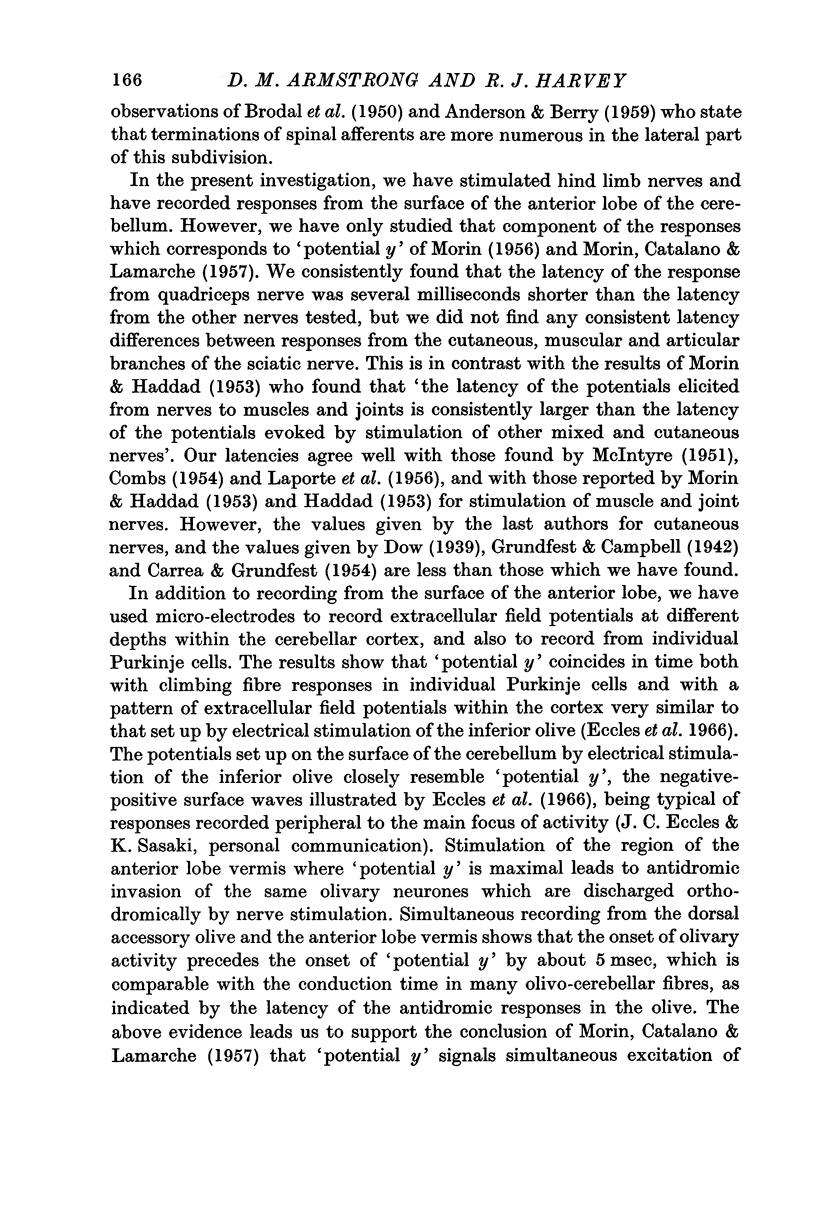
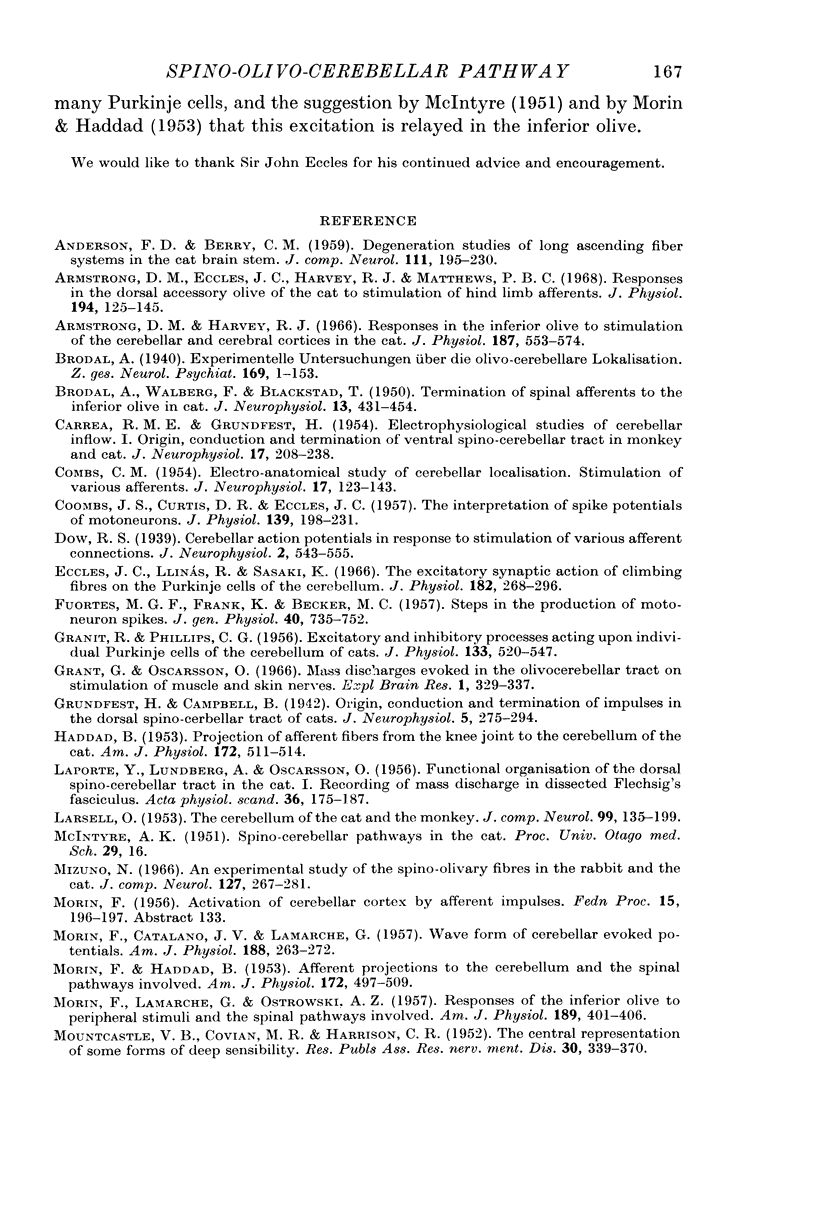
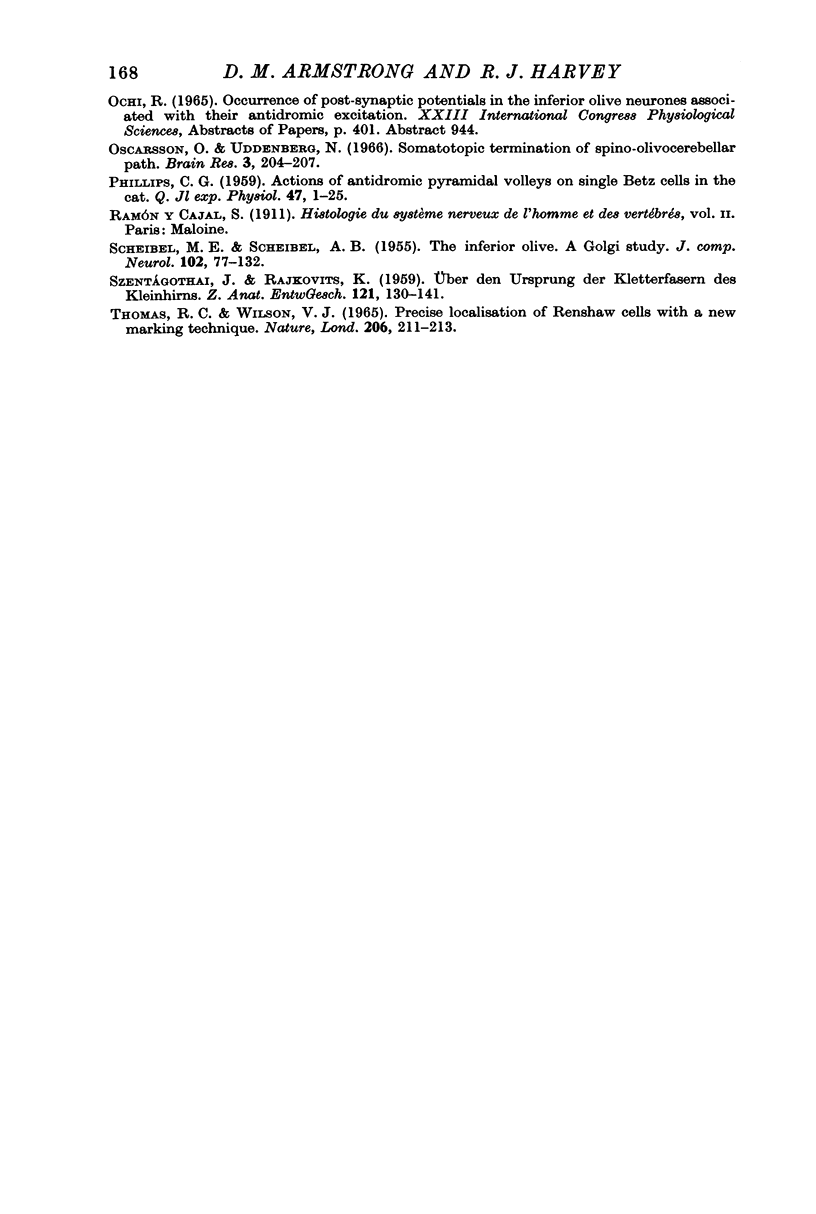
Selected References
These references are in PubMed. This may not be the complete list of references from this article.
- ANDERSON F. D., BERRY C. M. Degeneration studies of long ascending fiber systems in the cat brain stem. J Comp Neurol. 1959 Apr;111:195–229. doi: 10.1002/cne.901110202. [DOI] [PubMed] [Google Scholar]
- Armstrong B. D., Harvey R. J. Responses in the inferior olive to stimulation of the cerebellar and cerebral cortices in the cat. J Physiol. 1966 Dec;187(3):553–574. doi: 10.1113/jphysiol.1966.sp008108. [DOI] [PMC free article] [PubMed] [Google Scholar]
- Armstrong D. M., Eccles J. C., Harvey R. J., Matthews P. B. Responses in the dorsal accessory olive of the cat to stimulation of hind limb afferents. J Physiol. 1968 Jan;194(1):125–145. doi: 10.1113/jphysiol.1968.sp008398. [DOI] [PMC free article] [PubMed] [Google Scholar]
- BRODAL A., WALBERG F., BLACKSTAD T. Termination of spinal afferents to inferior olive in cat. J Neurophysiol. 1950 Nov;13(6):431–454. doi: 10.1152/jn.1950.13.6.431. [DOI] [PubMed] [Google Scholar]
- CARREA R. M., GRUNDFEST H. Electrophysiological studies of cerebellar inflow. I. Origin, conduction and termination of ventral spino-cerebellar tract in monkey and cat. J Neurophysiol. 1954 May;17(3):208–238. doi: 10.1152/jn.1954.17.3.208. [DOI] [PubMed] [Google Scholar]
- COMBS C. M. Electro-anatomical study of cerebellar localization; stimulation of various afferents. J Neurophysiol. 1954 Mar;17(2):123–143. doi: 10.1152/jn.1954.17.2.123. [DOI] [PubMed] [Google Scholar]
- COOMBS J. S., CURTIS D. R., ECCLES J. C. The interpretation of spike potentials of motoneurones. J Physiol. 1957 Dec 3;139(2):198–231. doi: 10.1113/jphysiol.1957.sp005887. [DOI] [PMC free article] [PubMed] [Google Scholar]
- Eccles J. C., Llinás R., Sasaki K. The excitatory synaptic action of climbing fibres on the Purkinje cells of the cerebellum. J Physiol. 1966 Jan;182(2):268–296. doi: 10.1113/jphysiol.1966.sp007824. [DOI] [PMC free article] [PubMed] [Google Scholar]
- FUORTES M. G., FRANK K., BECKER M. C. Steps in the production of motoneuron spikes. J Gen Physiol. 1957 May 20;40(5):735–752. doi: 10.1085/jgp.40.5.735. [DOI] [PMC free article] [PubMed] [Google Scholar]
- GRANIT R., PHILLIPS C. G. Excitatory and inhibitory processes acting upon individual Purkinje cells of the cerebellum in cats. J Physiol. 1956 Sep 27;133(3):520–547. doi: 10.1113/jphysiol.1956.sp005606. [DOI] [PMC free article] [PubMed] [Google Scholar]
- Grant G., Oscarsson O. Mass discharges evoked in the olivocerebellar tract on stimulation of muscle and skin nerves. Exp Brain Res. 1966;1(4):329–337. doi: 10.1007/BF00237705. [DOI] [PubMed] [Google Scholar]
- HADDAD B. Projection of afferent fibers from the knee joint to the cerebellum of the cat. Am J Physiol. 1953 Feb;172(2):511–514. doi: 10.1152/ajplegacy.1953.172.2.511. [DOI] [PubMed] [Google Scholar]
- LAPORTE Y., LUNDBERG A., OSCARSSON O. Functional organization of the dorsal spino-cerebellar tract in the cat. I. Recording of mass discharge in dissected Flechsig's fasciculus. Acta Physiol Scand. 1956 Mar 24;36(1-2):175–187. doi: 10.1111/j.1748-1716.1956.tb01316.x. [DOI] [PubMed] [Google Scholar]
- LARSELL O. The cerebellum of the cat and the monkey. J Comp Neurol. 1953 Aug;99(1):135–199. doi: 10.1002/cne.900990110. [DOI] [PubMed] [Google Scholar]
- MORIN F., CATALANO J. V., LAMARCHE G. Wave form of cerebellar evoked potentials. Am J Physiol. 1957 Feb;188(2):263–273. doi: 10.1152/ajplegacy.1957.188.2.263. [DOI] [PubMed] [Google Scholar]
- MORIN F., HADDAD B. Afferent projections to the cerebellum and the spinal pathways involved. Am J Physiol. 1953 Feb;172(2):497–510. doi: 10.1152/ajplegacy.1953.172.2.497. [DOI] [PubMed] [Google Scholar]
- MORIN F., LAMARCHE G., OSTROWSKI A. Z. Responses of the inferior olive to peripheral stimuli and the spinal pathways involved. Am J Physiol. 1957 May;189(2):401–406. doi: 10.1152/ajplegacy.1957.189.2.401. [DOI] [PubMed] [Google Scholar]
- MOUNTCASTLE V. B., COVIAN M. R., HARRISON C. R. The central representation of some forms of deep sensibility. Res Publ Assoc Res Nerv Ment Dis. 1952;30:339–370. [PubMed] [Google Scholar]
- Mizuno N. An experimental study of the spino-olivary fibers in the rabbit and the cat. J Comp Neurol. 1966 Jun;127(2):267–292. doi: 10.1002/cne.901270209. [DOI] [PubMed] [Google Scholar]
- Oscarsson O., Uddenberg N. Somatotopic termination of spino-olivocerebellar path. Brain Res. 1966 Dec;3(2):204–207. doi: 10.1016/0006-8993(66)90080-1. [DOI] [PubMed] [Google Scholar]
- PHILLIPS C. G. Actions of antidromic pyramidal volleys on single Betz cells in the cat. Q J Exp Physiol Cogn Med Sci. 1959 Jan;44(1):1–25. doi: 10.1113/expphysiol.1959.sp001364. [DOI] [PubMed] [Google Scholar]
- SCHEIBEL M. E., SCHEIBEL A. B. The inferior olive; a Golgi study. J Comp Neurol. 1955 Feb;102(1):77–131. doi: 10.1002/cne.901020106. [DOI] [PubMed] [Google Scholar]
- Thomas R. C., Wilson V. J. Precise localization of Renshaw cells with a new marking technique. Nature. 1965 Apr 10;206(980):211–213. doi: 10.1038/206211b0. [DOI] [PubMed] [Google Scholar]


